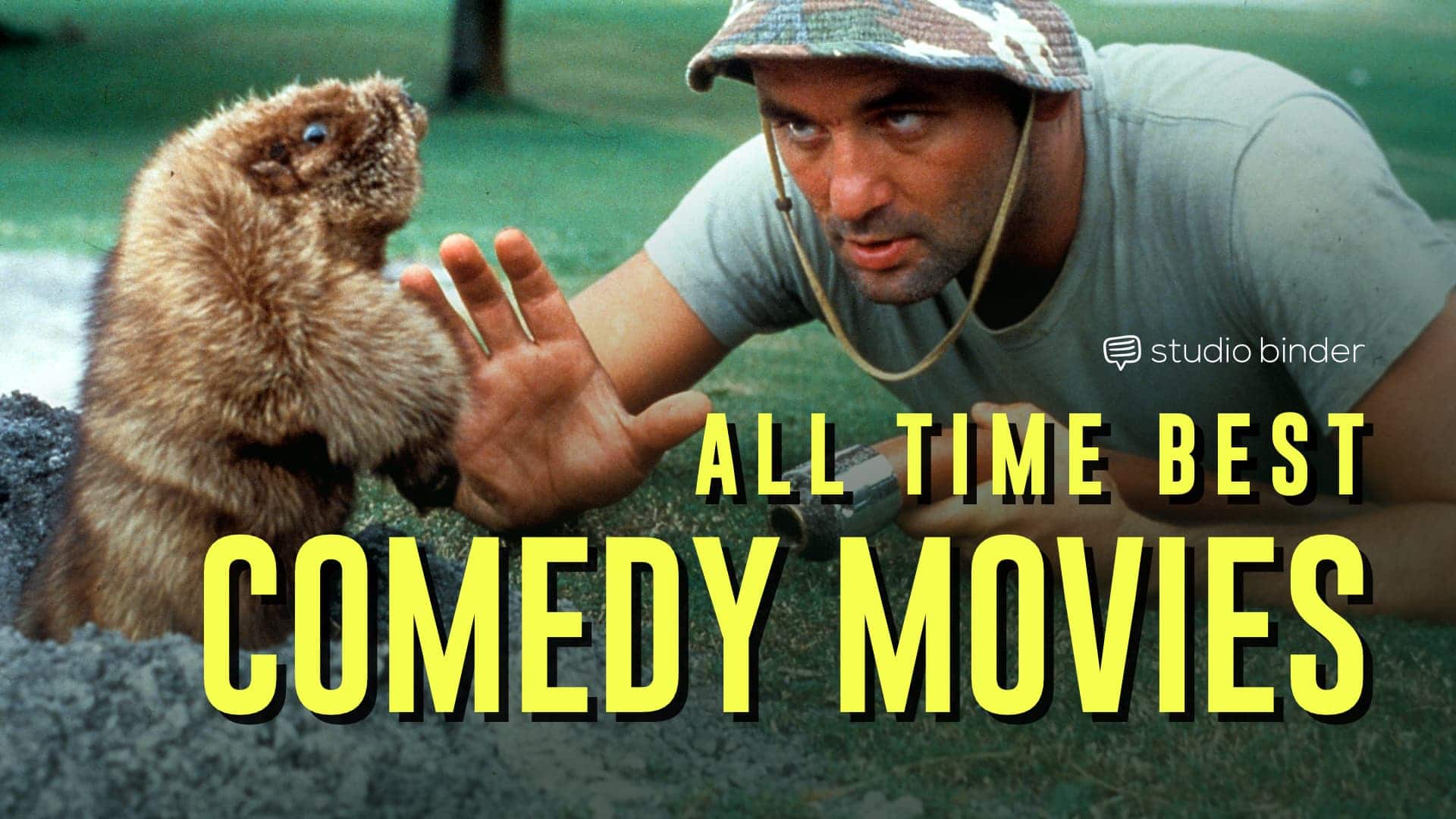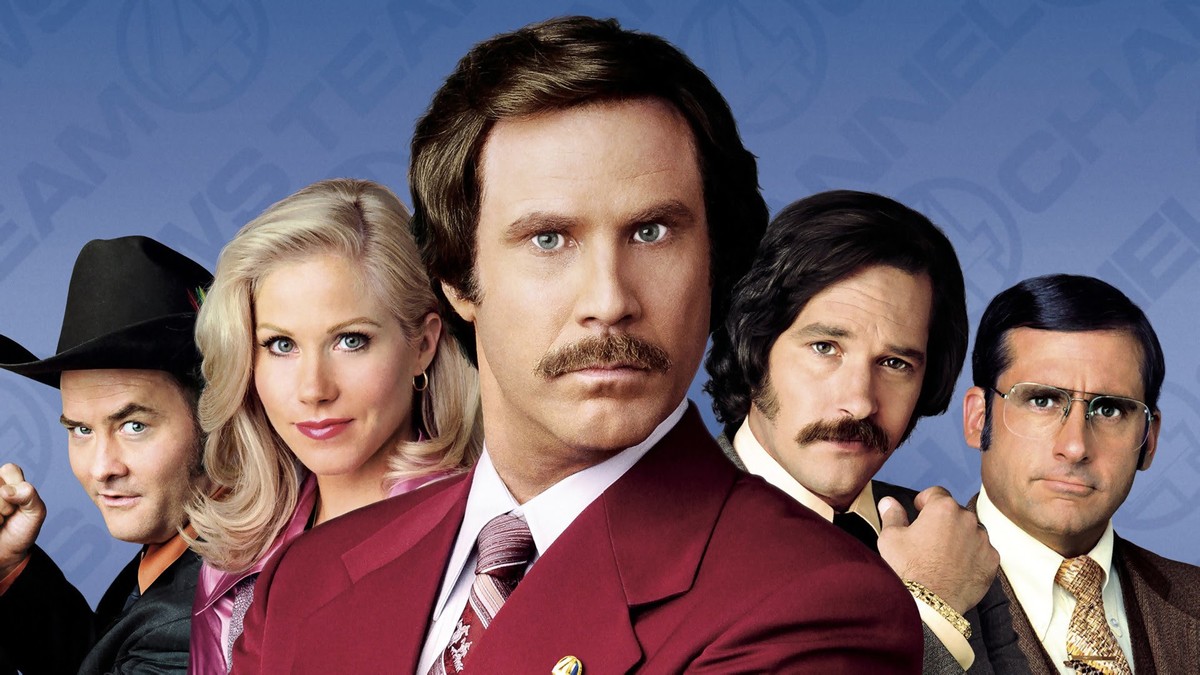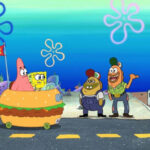Hilarious 21+ Comedy Films sets the stage for an exploration into the multifaceted world of adult humor in cinema. This analysis delves into the diverse comedic styles, genre conventions, character archetypes, and scriptwriting techniques that define this genre. We’ll examine the evolution of humor across different eras, considering the impact of social and cultural shifts on comedic trends and the role of profanity and adult themes. The discussion will also cover the influence of directors and actors, the importance of setting and atmosphere, and the effective use of satire and social commentary.
From slapstick to dark comedy, romantic comedies to satirical masterpieces, we will dissect what makes certain films undeniably hilarious, exploring the nuances of dialogue, visual gags, and the overall comedic timing that elevates a film from merely funny to truly memorable. The subjective nature of humor will also be considered, acknowledging the influence of cultural backgrounds and social contexts on audience perceptions.
Defining “Hilarious”
The definition of “hilarious” is inherently subjective, varying greatly depending on individual preferences, cultural backgrounds, and the specific social context. What one person finds uproariously funny, another might find mildly amusing or even offensive. This subjectivity is especially pronounced in the realm of adult comedy, where humor often pushes boundaries and explores mature themes.
Understanding the multifaceted nature of humor in 21+ films requires examining the diverse comedic styles employed and the influence of cultural norms and social situations. Different comedic approaches resonate with different audiences, and what’s considered acceptable or funny varies significantly across cultures and even within subcultures.
Comedic Styles in 21+ Films
Numerous comedic styles populate the landscape of adult films. These styles often blend, creating unique and layered comedic experiences. For instance, dark comedy, such as that found in films like “In Bruges,” relies on taboo subjects and morbid humor to elicit laughter. Slapstick comedy, while sometimes present in adult films, often takes a more sophisticated and self-aware approach, as seen in the exaggerated physical humor of some comedies. Satirical comedy, prevalent in films like “Dr. Strangelove,” uses humor to critique social and political issues, often employing irony and sarcasm. Finally, observational comedy, frequently used in stand-up routines adapted for film, focuses on witty and insightful commentary on everyday life and human behavior.
Cultural Influences on Humor, Hilarious 21+ Comedy Films
Cultural backgrounds significantly shape perceptions of humor. What’s considered acceptable or funny in one culture might be offensive or incomprehensible in another. For example, humor relying on self-deprecation might be well-received in some cultures but seen as weak or shameful in others. Similarly, certain types of physical comedy or sexual innuendo might be embraced in some cultures but considered taboo in others. These differences stem from varying social norms, values, and beliefs. A film relying heavily on cultural references specific to one nation may not translate well internationally, highlighting the importance of cultural sensitivity in comedy.
The Role of Social Context
The social context in which a comedic film is viewed profoundly impacts its perceived hilarity. A joke told in a private setting among close friends might elicit a different response than the same joke told in a formal public setting. The audience’s expectations, their relationship to the characters, and the overall atmosphere all contribute to the comedic experience. A film tackling sensitive topics like racism or sexism, for example, might be received differently depending on the audience’s political leanings and personal experiences. Furthermore, the time period in which a film is released can also affect its comedic reception, as societal norms and sensitivities evolve over time.
Genre Exploration
Adult-oriented comedy films encompass a diverse range of genres, each offering a unique comedic style and approach to mature themes. Understanding these genres helps to appreciate the nuances and variations within the world of 21+ comedy. The comedic effect often stems from the interplay between the chosen genre and the mature subject matter.
The following sections explore several prominent genres within 21+ comedy, providing a comparative analysis and highlighting examples of films that masterfully blend multiple genres to achieve comedic success.
Categorized List of 21+ Comedy Film Genres
Adult comedies draw from a wide spectrum of established genres, often incorporating mature themes and situations that would be inappropriate for a general audience. This results in a rich tapestry of comedic styles and approaches.
- Romantic Comedy (Rom-Com): Features romantic relationships as the central comedic element, often with mature themes of relationships and intimacy.
- Dark Comedy: Employs humor derived from taboo or otherwise unsettling subjects, such as death, violence, or social issues.
- Slapstick Comedy: Relies on physical humor, exaggerated movements, and often absurd situations.
- Screwball Comedy: Characterized by fast-paced dialogue, witty banter, and eccentric characters.
- Black Comedy: Similar to dark comedy, but often with a more cynical and nihilistic tone.
- Sex Comedy: Centers around sexual themes and situations, often with explicit content.
- Stoner Comedy: Features characters who are under the influence of marijuana, with humor stemming from their altered states of mind.
Comparative Analysis of Comedy Genres
A comparison of different genres highlights the unique characteristics and comedic approaches employed in adult-oriented films. This analysis focuses on three distinct genres to illustrate these differences.
| Genre | Characteristics | Typical Themes | Film Examples |
|---|---|---|---|
| Romantic Comedy | Witty dialogue, charming characters, relationship struggles, happy ending | Love, relationships, dating, marriage | When Harry Met Sally…, Bridesmaids, Crazy Rich Asians |
| Dark Comedy | Humor derived from taboo or morbid subjects, often cynical or satirical | Death, violence, social injustice, existentialism | In Bruges, The Big Lebowski, Dr. Strangelove |
| Slapstick Comedy | Physical humor, exaggerated movements, pratfalls, often absurd situations | Mishaps, chases, physical comedy | The Three Stooges (various films), Airplane!, Jackass (various films) |
Examples of Films Blending Multiple Comedic Genres
Many successful 21+ comedies seamlessly blend multiple genres to create a richer and more complex comedic experience. This strategic genre blending expands the comedic possibilities and often leads to more memorable and impactful films.
- Bridesmaids: This film expertly combines romantic comedy with elements of dark comedy and slapstick, creating a hilarious and relatable portrayal of female friendship and the stresses of wedding planning.
- The Hangover: This film blends elements of stoner comedy, sex comedy, and slapstick, resulting in a wildly popular and enduringly funny film about a bachelor party gone wrong.
- Bad Moms: This film successfully integrates dark comedy and raunchy humor with elements of romantic comedy, creating a hilarious look at the struggles of motherhood.
Character Archetypes in Hilarious 21+ Films
Adult comedies rely heavily on established character archetypes to deliver their comedic punchlines. These recurring figures, often exaggerated versions of real-world personalities, provide a familiar framework upon which writers build their jokes and scenarios. Their effectiveness stems from the audience’s immediate understanding and anticipation of their behavior, creating a predictable yet consistently amusing dynamic.
The evolution of these archetypes reflects changing societal norms and comedic sensibilities. Early adult comedies often featured more overtly sexist or racist characters, reflecting the prevailing social attitudes of the time. However, as societal views shifted, so did the portrayal of these characters, with a greater emphasis on nuance and a move away from harmful stereotypes. While some archetypes persist, their presentation has become more sophisticated and self-aware, often acknowledging and subverting their own tropes.
Common Character Archetypes in Adult Comedies
The “everyman” or “fish-out-of-water” character is a staple, often thrust into absurd situations that highlight their naiveté or incompetence. Conversely, the cynical, jaded character provides a counterpoint, offering sarcastic commentary on the absurdity unfolding around them. The “womanizer” or “player” archetype, while less prevalent in modern comedies due to evolving social norms, still appears, albeit often with a self-aware, comedically flawed presentation. The “nerd” or “geek” has also undergone a transformation, evolving from a purely comedic target to a relatable and often intelligent character who uses their wit and intellect to overcome challenges. Finally, the “best friend” archetype, typically the loyal and supportive companion, provides a grounded perspective and often acts as the straight man to the more outrageous characters.
Evolution of Archetypes Across Film Eras
Early adult comedies, particularly those from the 1970s and 80s, often relied heavily on crude humor and stereotypical characters. Think of the boisterous, womanizing protagonists common in many films of this era. These characters, while funny to some audiences at the time, often lacked the depth and complexity found in more modern portrayals. The rise of Judd Apatow-style comedies in the 2000s introduced a more nuanced approach, featuring characters with flaws and vulnerabilities, making them more relatable and sympathetic. The self-aware humor of many contemporary adult comedies further pushes the boundaries, with characters often commenting on their own archetypal roles.
Memorable Characters and Defining Comedic Traits
The following list showcases memorable characters from various adult comedies, highlighting their defining comedic traits:
- Alvy Singer (Annie Hall): Cynical, neurotic, and self-deprecating, Alvy’s observational humor and existential anxieties are both relatable and hilarious.
- Homer Simpson (The Simpsons): A lovable buffoon, Homer’s childlike innocence and obliviousness to his own flaws create endless comedic possibilities.
- Leslie Knope (Parks and Recreation): Overly enthusiastic and relentlessly optimistic, Leslie’s unwavering dedication to her work and her friends provides a constant source of comedic charm.
- Ron Swanson (Parks and Recreation): A stoic, libertarian, and wood-working enthusiast, Ron’s deadpan delivery and disdain for modern society are consistently amusing.
- Andy Dwyer (Parks and Recreation): Naive, quirky, and relentlessly positive, Andy’s childlike wonder and unexpected bursts of brilliance create hilarious situations.
The Role of Dialogue and Scriptwriting
Witty dialogue is the lifeblood of any successful 21+ comedy film. It’s not just about delivering jokes; it’s about crafting believable, engaging conversations that are both funny and insightful, reflecting the characters’ personalities and the film’s overall tone. The script is the blueprint for the comedic experience, shaping the rhythm and pacing, and ultimately determining whether the film resonates with its audience.
The success of a 21+ comedy hinges on the ability of the script to walk a tightrope between crude humor and genuinely clever writing. The best scripts use wit and wordplay to create unexpected twists, double entendres, and observational humor that appeals to a mature audience. This requires a nuanced understanding of comedic timing, character development, and the art of crafting a punchline that lands perfectly. A poorly written script, no matter how talented the actors, will result in a flat and unfunny film.
Memorable Dialogue and Comedic Effect
Several iconic 21+ comedies showcase the power of well-crafted dialogue. Consider the rapid-fire exchanges in films like “When Harry Met Sally…”, where the witty banter between the leads drives the narrative and underscores their evolving relationship. Lines like “I’ll have what she’s having,” while seemingly simple, become iconic due to their perfect timing and delivery, encapsulating a specific moment of realization and shared experience. Similarly, the dark humor and cynical wit of films like “In Bruges” rely on sharp, unexpected dialogue to create both laughs and unsettling moments. The film’s memorable lines often derive their humor from the contrast between the characters’ violent actions and their often flippant, self-aware dialogue. These examples highlight how memorable lines aren’t just funny on their own; they are integral to the character development and overall narrative arc.
Techniques for Creating Humorous Situations and Punchlines
Screenwriters employ various techniques to achieve comedic effect. One common method is the use of misdirection, where the audience anticipates one outcome, but the script delivers something entirely unexpected. This creates a surprise element that enhances the humor. Another technique involves building tension through escalating misunderstandings or awkward situations, leading to a satisfying resolution – or lack thereof – that generates laughter. The use of irony, sarcasm, and wordplay also adds layers of complexity and depth to the humor, appealing to a more sophisticated audience. Clever use of juxtaposition, contrasting seemingly disparate ideas or characters, can also be highly effective. Finally, the timing and delivery of lines are crucial; a well-placed pause or a perfectly timed reaction can elevate a simple joke into a memorable moment. The interaction between characters, the pacing of the dialogue, and the overall tone all contribute to the comedic impact.
Visual Comedy and Physical Humor
Visual comedy and physical humor form a cornerstone of many successful 21+ comedies, often transcending language barriers and appealing to a broad audience. These comedic techniques rely less on witty dialogue and more on exaggerated movements, facial expressions, and expertly timed pratfalls to elicit laughter. The effectiveness of this approach stems from its inherent absurdity and the primal human response to seeing someone stumble, fall, or get into a hilariously awkward situation.
Physical comedy, when executed well, amplifies the comedic impact of a scene. It allows for a more visceral and immediate connection with the audience, bypassing the need for extensive verbal explanation. The comedic timing is crucial; a perfectly executed pratfall can be side-splittingly funny, while a poorly timed one can fall flat. Similarly, the visual gags must be clear, concise, and easily understood, often relying on exaggeration and visual juxtapositions to create humor.
Examples of Physical Comedy in 21+ Films
Several films masterfully utilize physical comedy to enhance their comedic effect. Consider the slapstick routines in the “Hangover” trilogy. The sheer chaos and escalating absurdity of the characters’ situations, often involving physical mishaps and improbable scenarios, contribute significantly to the film’s comedic success. The visual gags, such as the tiger in the hotel room or the lost tooth, are memorable precisely because of their unexpected and visually striking nature. Similarly, films like “Bridesmaids” employ physical comedy, often through exaggerated reactions and uncomfortable situations, to build comedic tension and release. The infamous scene involving the food poisoning, for example, is a masterclass in uncomfortable, yet hilarious, physical comedy. The characters’ reactions, combined with the visual depiction of their discomfort, amplify the comedic effect.
The Importance of Timing and Execution in Physical Humor
The success of physical comedy hinges entirely on precision and timing. A perfectly timed stumble, a precisely delivered punch (though hopefully not a real one!), or a flawlessly executed facial expression can make or break a comedic scene. Consider the comedic genius of Charlie Chaplin, whose silent films relied heavily on physical comedy and impeccable timing. Each movement, each facial expression, was carefully crafted to maximize the comedic effect. Similarly, modern comedic actors often undergo rigorous training to perfect their physical comedic timing. The art lies in making the physicality appear effortless and spontaneous, even though it’s meticulously planned and rehearsed. The audience needs to believe in the character’s reactions and actions, even when they are exaggerated or over-the-top. The ability to maintain composure and deliver the comedic beat with the right rhythm is a skill that separates good physical comedy from truly great physical comedy. This control over timing allows for a perfectly crafted build-up of tension and a satisfying comedic release.
The Impact of Setting and Atmosphere

Setting and atmosphere are crucial elements in shaping the comedic tone of a film. They provide a context that either amplifies or undercuts the humor, influencing how audiences perceive the jokes and characters’ actions. A carefully chosen setting can establish expectations, create irony, and contribute significantly to the overall comedic effect.
The setting acts as a visual storytelling device, establishing the characters’ social and economic status, their relationships, and the overall mood. A change in setting can even act as a comedic beat itself, highlighting the absurdity of a situation or a character’s out-of-place behavior. For instance, the stark contrast between a sophisticated art gallery and a boisterous, slapstick comedy routine taking place within it creates immediate humor.
Urban versus Rural Settings and Their Comedic Effects
Urban and rural settings offer distinctly different comedic possibilities. Urban environments, with their density of people and activity, often lend themselves to fast-paced, witty banter and observational humor. The crowded streets, bustling markets, and diverse characters provide a rich backdrop for situational comedy, highlighting the chaotic and often absurd nature of city life. Think of films like “The Hangover,” where the urban landscape of Las Vegas acts as a catalyst for the escalating chaos. Conversely, rural settings often evoke a sense of quaintness, simplicity, and sometimes, a touch of eccentricity. The slower pace of life and the close-knit communities in rural areas can be exploited for comedic effect, highlighting the clash between the mundane and the unexpected. Films like “Napoleon Dynamite” effectively use the stark simplicity of a rural setting to amplify the quirky characters and their unusual behavior. The contrast between the expected tranquility and the characters’ outlandish actions heightens the comedic effect.
The Role of Lighting and Music in Shaping Comedic Atmosphere
Lighting and music play a significant role in establishing the comedic atmosphere. Lighting can dramatically alter the mood and tone of a scene. Bright, saturated colors can create a heightened sense of energy and silliness, while darker, more muted tones can contribute to a more subdued, ironic, or even darkly comedic atmosphere. Think of the bright, almost cartoonish lighting often used in slapstick comedies to emphasize the physical humor. In contrast, a film noir-style lighting scheme might be employed in a dark comedy to underscore the cynicism and irony of the situation. Similarly, music serves as a powerful tool for shaping the audience’s emotional response. Upbeat, quirky music can amplify the comedic energy, while a more melancholic or ironic soundtrack can add layers of complexity and depth to the humor, creating a juxtaposition between the music and the onscreen action that enhances the comedic impact. For example, a darkly comedic scene might utilize jarring, discordant music to highlight the absurdity of the situation, while a slapstick scene might employ jaunty, upbeat music to underscore the physical comedy.
The Use of Satire and Social Commentary
Satire, the art of using humor, irony, exaggeration, or ridicule to expose and criticize people’s stupidity or vices, particularly in the context of contemporary politics and other topical issues, is a powerful tool in 21+ comedy films. It allows filmmakers to address sensitive or controversial subjects in a way that is both entertaining and thought-provoking, potentially reaching a wider audience than a purely didactic approach. By cleverly weaving social commentary into the comedic narrative, these films can spark dialogue and encourage viewers to critically examine their own beliefs and the world around them.
Effective satire in comedy hinges on a delicate balance between humor and message. The humor should be engaging enough to keep the audience entertained, while the social commentary should be subtle yet impactful enough to leave a lasting impression. If the satire is too heavy-handed, it risks alienating viewers and becoming preachy; if it’s too subtle, the message may be lost altogether. The most successful satirical comedies manage to achieve a synergistic effect, where the humor enhances the message and vice versa, creating a richer and more memorable viewing experience.
Examples of Satire in 21+ Comedy Films
Several films successfully employ satire to comment on social issues. “Dr. Strangelove or: How I Learned to Stop Worrying and Love the Bomb” (1964) uses dark humor and exaggeration to satirize the Cold War and the potential for nuclear annihilation. The film’s absurd characters and situations highlight the irrationality and danger of unchecked military power and Cold War paranoia. Similarly, “Network” (1976) satirizes the sensationalism and commercialization of television news, showcasing how the pursuit of ratings can compromise journalistic integrity and manipulate public opinion. The film’s cynical portrayal of the media industry remains strikingly relevant today. “Thank You for Smoking” (2005) offers a darkly comedic look at the ethics of lobbying and the tobacco industry, presenting a charismatic protagonist whose amorality is both unsettling and strangely compelling. The film’s sharp wit and satirical portrayal of corporate influence on politics makes it a relevant commentary on the complexities of political lobbying.
Comedic Techniques Employed for Social Commentary
Different comedic techniques are strategically employed to achieve effective social commentary. Wordplay and irony are frequently used to subvert expectations and expose hypocrisy. For instance, a character might deliver a seemingly innocuous line that, upon closer examination, reveals a cynical or self-serving motive, highlighting the absurdity of their actions or beliefs. Exaggeration and caricature can also be employed to amplify certain traits or behaviors, making them appear ridiculous and prompting reflection on their real-world counterparts. The use of slapstick or physical comedy can also serve a satirical purpose, especially when used to highlight the incongruity between a character’s outward presentation and their inner motivations. For example, a powerful executive tripping over their own ego in a literal sense could be used to satirize their arrogance. Finally, absurd situations and scenarios can be used to highlight the illogical nature of certain social structures or norms, prompting viewers to question their own assumptions.
The Influence of Directors and Actors
The success of any comedic film hinges not only on a well-written script but also on the director’s vision and the actors’ ability to bring the characters to life with humor and nuance. The director’s comedic style, whether it leans towards slapstick, dark humor, or witty dialogue, significantly shapes the overall tone and effectiveness of the film. Similarly, an actor’s comedic timing, physicality, and ability to connect with the audience are crucial in delivering a truly hilarious performance. The interplay between directorial style and actor performance creates a synergistic effect, resulting in some of the most memorable comedic moments in cinema history.
The comedic styles of different directors vary considerably, reflecting their unique perspectives and approaches to filmmaking. Analyzing these styles reveals the impact they have on the overall comedic landscape of 21+ films. Furthermore, certain actors consistently deliver exceptional comedic performances, showcasing diverse techniques that contribute to their widespread appeal. Finally, examining successful director-actor collaborations reveals the power of a shared vision in crafting truly hilarious and memorable cinematic experiences.
Comparison of Comedic Styles of Prominent Directors
Three prominent directors known for their contributions to 21+ comedies are Judd Apatow, Christopher Guest, and Quentin Tarantino. Apatow’s style often centers around awkward situations and relatable characters, utilizing improvisational techniques to create a naturalistic and often cringe-worthy humor. His films, such as “Knocked Up” and “Superbad,” are characterized by their raunchy humor and exploration of contemporary social issues. In contrast, Christopher Guest employs a mockumentary style, using improvised dialogue and deadpan delivery to generate subtle, observational humor. His films, including “Best in Show” and “Waiting for Guffman,” focus on character interactions and the absurdity of everyday situations. Quentin Tarantino, while not exclusively a comedy director, frequently incorporates dark humor, witty dialogue, and stylized violence into his films, such as “Pulp Fiction” and “Inglourious Basterds,” creating a unique blend of comedy and action that is both shocking and hilarious.
Actors Known for Hilarious Performances and Their Techniques
Several actors consistently deliver hilarious performances, utilizing distinct comedic techniques. Bill Murray is renowned for his deadpan delivery and impeccable timing, creating a sense of understated humor that resonates deeply with audiences. His performances in films like “Ghostbusters” and “Lost in Translation” showcase his mastery of this technique. Melissa McCarthy is known for her physical comedy and over-the-top performances, often embracing vulgarity and absurdity to generate laughter. Her roles in films such as “Bridesmaids” and “Spy” exemplify her unique comedic style. Finally, Will Ferrell often relies on heightened characterizations and physical gags, creating a sense of manic energy that is infectious and hilarious. His performances in films like “Anchorman” and “Talladega Nights” are prime examples of his energetic and absurd approach to comedy.
Successful Director-Actor Collaborations
The collaboration between a director and an actor can be crucial in creating a successful comedic film. The following list showcases some particularly successful partnerships:
- Judd Apatow and Seth Rogen: Their collaboration on films like “Knocked Up,” “Superbad,” and “Pineapple Express” resulted in consistently hilarious and critically acclaimed comedies. Their shared understanding of comedic timing and their ability to create relatable characters contributed significantly to their success.
- Christopher Guest and Parker Posey: Posey’s frequent appearances in Guest’s mockumentaries, such as “Best in Show” and “A Mighty Wind,” demonstrate a perfect synergy between the director’s subtle style and the actor’s ability to portray eccentric characters with understated humor.
- Wes Anderson and Bill Murray: Anderson’s whimsical and quirky style is perfectly complemented by Murray’s deadpan delivery. Their collaborations, including “Rushmore,” “The Royal Tenenbaums,” and “The Grand Budapest Hotel,” showcase a unique and consistently funny cinematic partnership.
Evolution of Humor in 21+ Films Over Time
The landscape of humor in adult-oriented films has undergone a significant transformation over the decades, reflecting evolving societal norms, technological advancements, and changing audience expectations. What was once considered shocking or taboo has, in many cases, become commonplace, while new forms of comedic expression have emerged. This evolution is not simply a progression towards more explicit content; rather, it’s a complex interplay of shifting cultural values and innovative comedic techniques.
The types of humor considered acceptable in 21+ films have been profoundly shaped by social and cultural shifts. The post-World War II era saw a gradual loosening of censorship, allowing for a greater exploration of adult themes in comedy. However, even within this loosening, significant constraints remained, influencing the kinds of jokes that could be told and the ways in which they could be presented. The rise of feminism, the Civil Rights Movement, and LGBTQ+ rights movements further challenged traditional comedic tropes and prompted a reconsideration of what constituted acceptable humor. Contemporary audiences are increasingly sensitive to issues of representation and inclusivity, demanding more nuanced and responsible comedic approaches.
Changes in Humor Across Decades
The evolution of humor in 21+ films can be observed across different decades. The 1950s and 60s, for example, often relied on slapstick, witty banter, and suggestive innuendo, navigating the boundaries of censorship with clever wordplay and double entendres. Films like “Some Like It Hot” (1959) exemplify this style, using cross-dressing and mistaken identities to create humorous situations without explicitly depicting adult content. The 1970s and 80s saw a rise in more overtly sexual and scatological humor, often characterized by a rebellious and counter-cultural attitude. Films such as “Animal House” (1978) and “Porky’s” (1981) pushed boundaries with their raunchy humor, reflecting a changing societal climate. The 1990s and 2000s witnessed a diversification of comedic styles, with the rise of dark comedy, cynical humor, and self-aware meta-humor. Films like “Pulp Fiction” (1994) and “The Hangover” (2009) demonstrate this shift, blending violence, absurdity, and unexpected twists with comedic effect. More recently, the 2010s and 2020s have seen a continued expansion of comedic styles, with increased emphasis on social commentary, diverse representation, and a greater awareness of potentially offensive material. Films like “Bridesmaids” (2011) and “Booksmart” (2019) showcase this trend, offering female-led narratives with humor that is both raunchy and emotionally resonant. The focus has shifted towards a more inclusive and self-aware approach, acknowledging the potential pitfalls of insensitive humor while still pushing boundaries in new and creative ways.
The Use of Profanity and Adult Themes: Hilarious 21+ Comedy Films

Profanity and adult themes are frequently employed in 21+ comedy films, acting as a double-edged sword capable of enhancing comedic effect or severely undermining it. Their skillful integration hinges on a delicate balance between shock value and narrative coherence, directly influencing the overall comedic tone and audience reception. The effectiveness of this approach varies wildly depending on the film’s execution.
The role of profanity and adult themes in shaping comedic tone is multifaceted. Profanity can function as a comedic tool in itself, creating laughter through surprise, taboo-breaking, or the unexpected juxtaposition of vulgar language with otherwise mundane situations. Adult themes, similarly, can offer opportunities for satire, exploring societal norms and hypocrisy through explicit content. However, the overuse of profanity can quickly become tiresome and detract from the humor, while poorly handled adult themes can feel gratuitous or even offensive, alienating the audience. The key lies in using such elements strategically, serving the narrative and enhancing the comedic impact rather than relying on them as crutches.
Profanity’s Impact on Comedic Effectiveness
The strategic use of profanity can significantly amplify the comedic impact of a scene. Consider the contrast between a character delivering a heartfelt monologue in formal language and then unexpectedly unleashing a string of expletives. This jarring shift can create a comedic effect that wouldn’t be possible with more restrained language. Conversely, excessive use of profanity can desensitize the audience, making the humor feel cheap and predictable. Films like “Bad Moms” utilize profanity effectively to highlight the frustration and rebellion of the main characters, whereas others might rely on it as a lazy shortcut to generate laughs. The effectiveness depends heavily on context, delivery, and the overall tone of the film.
Risk and Reward of Explicit Content
Employing explicit content presents both significant risks and potential rewards. The rewards include the ability to explore complex themes with greater honesty and depth, pushing comedic boundaries and generating strong reactions from audiences. The risks, however, are equally substantial. Overly explicit content can easily alienate audiences, leading to negative reviews and box office disappointment. Furthermore, there’s the risk of facing censorship or backlash from various groups, potentially limiting the film’s reach and creating negative publicity. Films like “Bridesmaids” walked a fine line, successfully incorporating adult themes without resorting to gratuitous exploitation, while others have stumbled, showcasing the need for careful planning and execution.
Varied Approaches to Adult Themes
Different films demonstrate varying levels of success in handling adult themes. Some, like “The Hangover,” effectively use adult themes as a catalyst for comedic situations, creating a chaotic and hilarious narrative. Others, however, might fall into the trap of relying solely on shock value, neglecting character development and narrative coherence. The difference lies in the integration of adult themes into the broader narrative. A successful approach seamlessly weaves these themes into the story, enhancing the characters and their interactions, while an unsuccessful one utilizes them as a cheap substitute for genuine humor. This difference is apparent when comparing films that utilize adult themes for genuine comedic purposes to those that rely on them as mere shock tactics.
Memorable Scenes and Moments
Certain scenes in R-rated comedies transcend the typical gags and become ingrained in popular culture, often quoted and imitated for years afterward. These moments are frequently defined by their unexpectedness, clever writing, or a perfect blend of visual and verbal humor, resonating with audiences on a deeper level than simple laughter. The impact of such scenes often lies in their ability to tap into shared experiences or societal absurdities, making them both relatable and hilariously unique.
The selection of truly memorable scenes is subjective, varying based on individual tastes and comedic sensibilities. However, some scenes consistently stand out for their enduring comedic power and cultural impact. These scenes often involve a perfect storm of factors, from impeccable timing and delivery to a genuinely surprising twist or unexpected consequence.
Examples of Memorable Scenes in 21+ Comedy Films
Several scenes from various R-rated comedies exemplify the power of memorable comedic moments. These examples highlight different approaches to humor, demonstrating the versatility of the genre.
- The “Airplane!” Shower Scene: In the classic comedy Airplane!, the scene where Robert Hays’ character, Ted Striker, attempts to calm a distraught passenger by using a variety of increasingly absurd methods, culminating in him showering her with water, is a masterclass in escalating absurdity. The sheer unexpectedness of the actions, coupled with the deadpan delivery from Hays, makes the scene utterly hilarious. The scene is memorable for its perfect blend of physical and verbal comedy, enhanced by the film’s overall parody of disaster movies.
- The “Wedding Crashers” Reception Dance-Off: In Wedding Crashers, the scene where John Beckwith (Owen Wilson) and Jeremy Grey (Vince Vaughn) unexpectedly participate in a dance-off at a wedding reception showcases the duo’s improvisational comedic timing. The escalating absurdity of their dance moves, coupled with their increasingly desperate attempts to impress the wedding guests, creates a memorable and uproarious scene. The scene’s success stems from the characters’ charmingly inappropriate behavior and the unexpected reactions of those around them.
- The “Bridesmaids” Flight Scene: The infamous scene in Bridesmaids where the characters experience extreme turbulence and a subsequent bathroom emergency is unforgettable for its raw, visceral humor. The scene effectively uses physical comedy, combined with the characters’ increasingly desperate attempts to maintain composure, to create a chaotic and hilarious moment. The scene’s memorability stems from its relatable portrayal of a stressful situation and the comedic exaggeration of the resulting chaos.
- The “Superbad” McLovin’ Scene: In Superbad, the scene where Fogell (Christopher Mintz-Plasse) uses a fake ID to purchase alcohol is memorable for its awkwardness and unexpected consequences. The scene relies heavily on character interaction and the escalating tension as Fogell attempts to maintain his composure in the face of scrutiny. The scene’s humor comes from the perfect balance of cringe-worthy awkwardness and the ultimately triumphant (though slightly absurd) outcome. The scene is iconic for its use of character development to amplify the humor.
- The “Hangover” Tiger Scene: The scene in The Hangover where the characters wake up in a Las Vegas hotel room with a tiger in it is memorable for its sheer surrealism. The scene’s humor derives from the unexpected juxtaposition of a wild animal in a domestic setting, amplified by the characters’ bewildered reactions. The scene’s lasting impact stems from its unexpectedness and the complete absurdity of the situation, leaving a lasting impression on viewers.
Closing Notes
Ultimately, the enduring appeal of Hilarious 21+ Comedy Films lies in their ability to connect with audiences on multiple levels. Whether through relatable characters, witty dialogue, clever visual gags, or insightful social commentary, these films provide both escapism and a reflection of our shared human experience. This exploration has highlighted the diverse elements that contribute to the success of these films, emphasizing the intricate interplay between genre, character, script, and cultural context in creating truly hilarious and lasting cinematic experiences.





